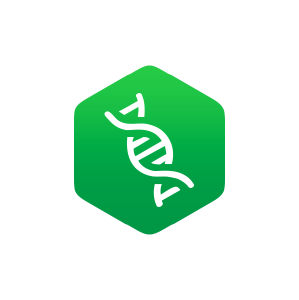Search
- https://bio.libretexts.org/Courses/Chemeketa_Community_College/Cell_Biology_for_Allied_Health/09%3A_Cells/9.06%3A_Cytoplasm_and_CytoskeletonThe cytoplasm is a thick, usually colorless solution that fills each cell and is enclosed by the cell membrane. Sometimes cytoplasm acts like a watery solution, and sometimes it takes on a more gel-li...The cytoplasm is a thick, usually colorless solution that fills each cell and is enclosed by the cell membrane. Sometimes cytoplasm acts like a watery solution, and sometimes it takes on a more gel-like consistency. A framework of protein scaffolds called the cytoskeleton provides the cytoplasm and the cell with structure.
- https://bio.libretexts.org/Bookshelves/Human_Biology/Human_Biology_(Wakim_and_Grewal)/05%3A_Cells/5.05%3A_Cytoplasm_and_CytoskeletonThe cytoplasm is a thick, usually colorless solution that fills each cell and is enclosed by the cell membrane. Sometimes cytoplasm acts like a watery solution, and sometimes it takes on a more gel-li...The cytoplasm is a thick, usually colorless solution that fills each cell and is enclosed by the cell membrane. Sometimes cytoplasm acts like a watery solution, and sometimes it takes on a more gel-like consistency. A framework of protein scaffolds called the cytoskeleton provides the cytoplasm and the cell with structure.
- https://bio.libretexts.org/Courses/Hanover_College/Comparative_Anatomy_and_Physiology_of_Animals/07%3A_The_Muscular_System/7.03%3A_Muscle_Contraction_and_LocomotionThe body contains three types of muscle tissue: skeletal muscle, cardiac muscle, and smooth muscle. Skeleton muscle tissue is composed of sarcomeres, the functional units of muscle tissue. Muscle cont...The body contains three types of muscle tissue: skeletal muscle, cardiac muscle, and smooth muscle. Skeleton muscle tissue is composed of sarcomeres, the functional units of muscle tissue. Muscle contraction occurs when sarcomeres shorten, as thick and thin filaments slide past each other, which is called the sliding filament model of muscle contraction. ATP provides the energy for cross-bridge formation and filament sliding.
- https://bio.libretexts.org/Courses/Skyline_College/BIOL_130%3A_Human_Biology/03%3A_Cells/3.05%3A_Cytoplasm_and_CytoskeletonThe cytoplasm is a thick, usually colorless solution that fills each cell and is enclosed by the cell membrane. Sometimes cytoplasm acts like a watery solution, and sometimes it takes on a more gel-li...The cytoplasm is a thick, usually colorless solution that fills each cell and is enclosed by the cell membrane. Sometimes cytoplasm acts like a watery solution, and sometimes it takes on a more gel-like consistency. A framework of protein scaffolds called the cytoskeleton provides the cytoplasm and the cell with structure.
- https://bio.libretexts.org/Courses/Canada_College/Human_Biology_Biol_011_Textbook/05%3A_Cells/5.05%3A_Cytoplasm_and_CytoskeletonThe cytoplasm is a thick, usually colorless solution that fills each cell and is enclosed by the cell membrane. Sometimes cytoplasm acts like a watery solution, and sometimes it takes on a more gel-li...The cytoplasm is a thick, usually colorless solution that fills each cell and is enclosed by the cell membrane. Sometimes cytoplasm acts like a watery solution, and sometimes it takes on a more gel-like consistency. A framework of protein scaffolds called the cytoskeleton provides the cytoplasm and the cell with structure.
- https://bio.libretexts.org/Workbench/Principles_of_the_Human_Body/6%3A_Cells/6.05%3A_Cytoplasm_and_CytoskeletonThe cytoplasm is a thick, usually colorless solution that fills each cell and is enclosed by the cell membrane. Sometimes cytoplasm acts like a watery solution, and sometimes it takes on a more gel-li...The cytoplasm is a thick, usually colorless solution that fills each cell and is enclosed by the cell membrane. Sometimes cytoplasm acts like a watery solution, and sometimes it takes on a more gel-like consistency. A framework of protein scaffolds called the cytoskeleton provides the cytoplasm and the cell with structure.
- https://bio.libretexts.org/Bookshelves/Cell_and_Molecular_Biology/Book%3A_Cells_-_Molecules_and_Mechanisms_(Wong)/12%3A_Cytoskeleton/12.03%3A_Actin_MicrofilamentsMicrofilaments are also known as actin filaments, filamentous actin, and f-actin, and they are the cytoskeletal opposites of the intermediate filaments. These strands are made up of small globular act...Microfilaments are also known as actin filaments, filamentous actin, and f-actin, and they are the cytoskeletal opposites of the intermediate filaments. These strands are made up of small globular actin (g-actin) subunits that stack on one another with relatively small points of contact.
- https://bio.libretexts.org/Courses/Ouachita_Baptist_University/Reyna_Cell_Biology/07%3A_(T3)_Cytoskeleton/7.03%3A_Actin_MicrofilamentsMicrofilaments are also known as actin filaments, filamentous actin, and f-actin, and they are the cytoskeletal opposites of the intermediate filaments. These strands are made up of small globular act...Microfilaments are also known as actin filaments, filamentous actin, and f-actin, and they are the cytoskeletal opposites of the intermediate filaments. These strands are made up of small globular actin (g-actin) subunits that stack on one another with relatively small points of contact.
- https://bio.libretexts.org/Bookshelves/Biochemistry/Fundamentals_of_Biochemistry_(Jakubowski_and_Flatt)/01%3A_Unit_I-_Structure_and_Catalysis/05%3A_Protein_Function/5.05%3A_Protein_Interactions_Modulated_by_Chemical_Energy-_Actin_Myosin_and_Molecular_MotorsThis page provides an in-depth exploration of the structural and functional aspects of molecular motors like myosin, kinesin, and dynein, focusing on their roles in muscle contraction and cellular mot...This page provides an in-depth exploration of the structural and functional aspects of molecular motors like myosin, kinesin, and dynein, focusing on their roles in muscle contraction and cellular motility. It covers the actomyosin cross-bridge cycle, the interaction of actin and myosin, and the regulation of muscle contraction through proteins like troponin and tropomyosin, with a detailed explanation of the biochemical underpinnings of these processes.
- https://bio.libretexts.org/Bookshelves/Cell_and_Molecular_Biology/Fundamentals_of_Cell_Biology_(Dalton_and_Young)/06%3A_The_Cytoskeleton/6.03%3A_Actin_FilamentsThis page covers actin filaments, their dynamic instability, and the influence of actin-binding proteins (ABPs) on their organization and functions, especially in cellular motility and muscle contract...This page covers actin filaments, their dynamic instability, and the influence of actin-binding proteins (ABPs) on their organization and functions, especially in cellular motility and muscle contraction via myosin. It details various myosin types, their movement along actin, and their reliance on ATP for function.
- https://bio.libretexts.org/Courses/Coastline_College/Book-_Cells_-_Molecules_and_Mechanisms_(Wong)/07%3A_Membrane_Boundaries_and_Capturing_Energy/7.05%3A_Cytoskeleton/7.5.03%3A_Actin_MicrofilamentsMicrofilaments are also known as actin filaments, filamentous actin, and f-actin, and they are the cytoskeletal opposites of the intermediate filaments. These strands are made up of small globular act...Microfilaments are also known as actin filaments, filamentous actin, and f-actin, and they are the cytoskeletal opposites of the intermediate filaments. These strands are made up of small globular actin (g-actin) subunits that stack on one another with relatively small points of contact.

